Home>Interior Design>How To Season A Cast Iron Pan: Experts Advise
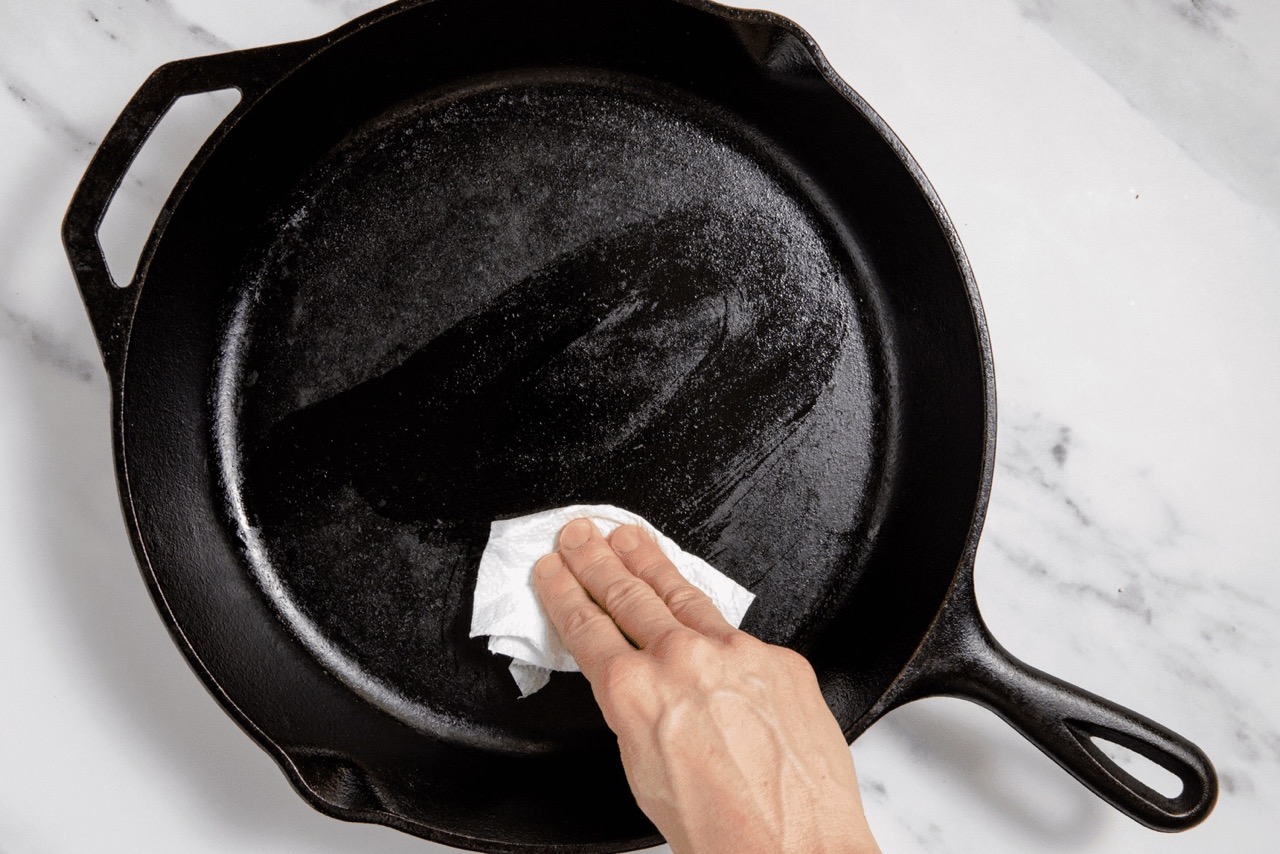

Interior Design
How To Season A Cast Iron Pan: Experts Advise
Modified: January 21, 2024
Learn from the experts on how to season a cast iron pan for optimal cooking results. Improve your interior design skills with this essential guide.
(Many of the links in this article redirect to a specific reviewed product. Your purchase of these products through affiliate links helps to generate commission for Storables.com, at no extra cost. Learn more)
Introduction
Welcome to the world of cast iron cooking! If you’ve recently acquired a cast iron pan or have been using one for a while, you may have heard about the importance of seasoning it. Seasoning is the process of creating a protective layer on the surface of the pan that enhances its non-stick properties and prevents it from rusting. In this article, we’ll guide you through the steps of seasoning a cast iron pan like a pro, with tips from experts in the field.
Cast iron pans are beloved by professional chefs and home cooks alike for their excellent heat retention and even distribution. When properly seasoned, a cast iron pan can develop a natural non-stick surface that rivals even the most high-end non-stick pans on the market. This means you can cook everything from eggs to seared steaks without worrying about them sticking to the pan.
But why is seasoning so important? Without seasoning, the iron surface of the pan is vulnerable to rust and can become sticky, making it challenging to cook and clean. Seasoning creates a protective layer of polymerized oil or fat that fills in the tiny pores and imperfections in the metal, forming a slick surface that food can’t cling to.
Furthermore, a well-seasoned cast iron pan imparts a unique and delicious flavor to your dishes. Each time you use your seasoned pan, a layer of flavorful oil gets baked into the surface, enhancing the taste of your food and making each meal a culinary delight.
Seasoning a cast iron pan may seem daunting at first, but with the right techniques and a bit of patience, you’ll soon have a pan that will become your kitchen’s prized possession. In the following sections, we’ll delve into the benefits of seasoning, the cleaning and preparation process, the best oils to use, and provide step-by-step instructions to help you achieve a perfectly seasoned cast iron pan.
Key Takeaways:
- Seasoning a cast iron pan is essential for creating a natural non-stick surface, enhancing heat retention, and protecting against rust. With proper maintenance, a well-seasoned cast iron pan can last for generations.
- Choosing the right oil, applying thin coats, and multiple rounds of seasoning are key steps in achieving a perfectly seasoned cast iron pan. Avoid common mistakes, embrace patina, and seek expert advice for optimal maintenance.
Benefits of Seasoning a Cast Iron Pan
Seasoning your cast iron pan offers a multitude of benefits that make it worth the effort. Here are some of the key advantages:
- Improved Non-Stick Performance: The seasoning process creates a natural non-stick surface on your cast iron pan. This allows you to cook delicate foods like eggs and pancakes without worrying about them sticking to the pan. It also makes cleanup easier as food residue effortlessly slides off the seasoned surface.
- Enhanced Heat Retention and Distribution: Cast iron is renowned for its ability to retain and distribute heat evenly. When properly seasoned, the layers of oil on the surface help to conduct heat more effectively, resulting in consistent cooking and preventing hot spots.
- Protection Against Rust: Seasoning creates a barrier between the iron surface of the pan and moisture, preventing it from rusting. A well-seasoned cast iron pan can last for generations if properly cared for.
- Improved Flavor: The more you use your cast iron pan, the more flavor it adds to your meals. Over time, the seasoning enhances the taste of your food, giving it a unique and delicious character.
- Chemical-Free Cooking: Unlike some non-stick pans that contain potentially harmful chemicals, a seasoned cast iron pan is a safe and natural option for cooking. You can enjoy preparing meals without worrying about any unwanted substances leaching into your food.
- Versatility: Cast iron pans are incredibly versatile and can be used on various heat sources, including stovetops, ovens, and even campfires. They can withstand high temperatures, making them suitable for searing, frying, baking, and even outdoor cooking.
- Health Benefits: Cooking in a seasoned cast iron pan allows you to reduce the amount of oil or fat needed for cooking. The seasoning creates a non-stick surface that requires less oil, promoting healthier cooking without sacrificing flavor.
By taking the time to season your cast iron pan, you’ll unlock its full potential and enjoy the many benefits it has to offer. Now that you understand why seasoning is crucial, let’s dive into the process of cleaning and preparing your pan before seasoning.
Cleaning and Preparing Your Cast Iron Pan
Before you can begin the seasoning process, it’s important to thoroughly clean and prepare your cast iron pan. Here are the steps to follow:
- Scrub with Warm Water: Start by scrubbing your pan with warm water and a small amount of dish soap. Use a non-abrasive sponge or brush to gently scrub away any food residue or grease. Avoid using harsh scrubbing pads or steel wool as they can damage the seasoning.
- Dry Thoroughly: Once the pan is clean, dry it thoroughly with a dish towel or paper towel. It’s essential to remove all moisture to prevent rust from forming.
- Remove Stubborn Stains: If there are any stubborn stains or stuck-on food that won’t come off with regular cleaning, you can use a paste made of coarse salt and water or a mild abrasive like baking soda. Gently scrub the affected area with a soft cloth or sponge until the stain is removed.
- Apply a Thin Coat of Oil: After cleaning and drying, it’s time to apply a thin coat of oil to the entire surface of the pan. This helps to protect the iron from moisture and prepares it for the seasoning process. You can use a neutral cooking oil like vegetable oil, canola oil, or flaxseed oil.
- Wipe Off Excess Oil: Once you’ve applied the oil, use a clean paper towel or cloth to wipe off any excess oil from the pan. The surface should appear evenly coated with a thin layer of oil.
- Place in a Preheated Oven: To further prepare the pan, preheat your oven to a relatively low temperature, around 300°F (150°C). Place the pan upside down on the middle rack of the oven, with a baking sheet or aluminum foil on the lower rack to catch any drips.
- Bake for an Hour: Leave the pan in the oven for about an hour to allow the oil to polymerize and create a protective layer on the surface. This process will help in the formation of a durable and non-stick seasoning. Note: If you notice excessive smoke during this step, reduce the temperature slightly to prevent the oil from burning.
- Allow to Cool: Once the hour is up, turn off the oven and allow the pan to cool inside before removing it. It’s crucial to let the pan cool slowly to avoid any sudden temperature changes that could cause it to warp or crack.
Now that your cast iron pan is clean, dried, and prepped, it’s time to move on to the next step: choosing the right oil for seasoning.
Choosing the Right Oil for Seasoning
The choice of oil for seasoning your cast iron pan plays a vital role in the overall quality of the seasoning and the resulting non-stick surface. While there are many oils you can use, some are better suited for this purpose than others. Here are a few options to consider:
- Vegetable Oil: Vegetable oil, such as canola or soybean oil, is a popular choice for seasoning cast iron pans. It has a high smoke point, which means it can withstand the high temperatures needed for proper seasoning. Moreover, vegetable oil is readily available, affordable, and has a neutral flavor.
- Flaxseed Oil: Flaxseed oil is another great option for seasoning cast iron. It has a lower smoke point than vegetable oil but forms a hard and durable seasoning when properly applied and baked. Flaxseed oil is known for its ability to create a smooth and non-stick surface, making it the preferred choice for many cast iron enthusiasts.
- Grapeseed Oil: Grapeseed oil is a healthy cooking oil that works well for cast iron seasoning. It has a high smoke point and a mild flavor, making it suitable for high-temperature cooking. Grapeseed oil also contains antioxidants that can add an extra layer of protection to your cast iron pan.
- Avocado Oil: Avocado oil is another excellent option for seasoning cast iron due to its high smoke point and neutral taste. Like grapeseed oil, it contains antioxidants and healthy fats that can enhance the durability of the seasoning.
- Lard or Bacon Fat: If you prefer to use animal fats, lard or bacon fat can be used for seasoning. These fats have a low smoke point, so they may not create the most durable seasoning. However, they can add a rich flavor to your cast iron pan and are a traditional choice in some culinary cultures.
When selecting an oil, it’s essential to consider factors such as smoke point, availability, and personal preferences. Regardless of the oil you choose, ensure it is of high quality and free from any additives or flavors that may affect the taste of your food. Now that you’ve chosen your oil, it’s time to dive into the step-by-step guide on how to season your cast iron pan.
Step-by-Step Guide to Seasoning a Cast Iron Pan
Now that you have a clean and prepped cast iron pan and have chosen the oil for seasoning, let’s dive into the step-by-step process of seasoning your pan:
- Preheat your Oven: Start by preheating your oven to a relatively low temperature, around 325°F (163°C). This temperature allows the oil to bond with the cast iron effectively.
- Apply a Thin Coat of Oil: Using a clean paper towel or cloth, apply a thin layer of oil to the entire surface of the pan, including the handle. Ensure that the oil is evenly spread, and there are no thick or gloopy areas.
- Remove Excess Oil: After applying the oil, use a fresh paper towel or cloth to wipe off any excess oil. The pan should have a barely visible sheen of oil, with no visible accumulation.
- Place the Pan in the Oven: Once your oven is preheated, place the pan upside down on the middle rack. To catch any potential drips, you can position a sheet of aluminum foil or a baking sheet on the lower rack.
- Bake for an Hour: Allow the pan to bake in the oven for about an hour. This duration allows the oil to polymerize and bond with the cast iron, forming a protective layer with enhanced non-stick properties.
- Cool and Repeat: After the hour is up, turn off the oven and let the pan cool completely in the oven. Once it has cooled, you can repeat the process of applying a thin coat of oil and baking for an hour. Additional rounds of seasoning can further improve the quality of the pan’s non-stick surface.
- Build Up Layers: Many seasoned cast iron enthusiasts recommend building up multiple layers of seasoning to achieve the best results. This can be achieved by repeating the oil application and baking process several times. Each round helps to enhance the durability and non-stick properties of the seasoning.
- Maintain Regular Use: After seasoning your cast iron pan, the true magic happens with regular use. The more you cook with it, the better the seasoning becomes. With each use, a small amount of oil gets baked into the surface, further enhancing the pan’s non-stick properties and adding a rich flavor to your dishes.
Following these steps will help you achieve a perfectly seasoned cast iron pan that will provide years of reliable and enjoyable cooking. However, there are some common mistakes to be aware of and tips to consider, which we will cover in the next sections.
After cleaning your cast iron pan, apply a thin layer of oil and heat it in the oven at 350°F for an hour. This will create a non-stick surface and prevent rust.
Read more: How To Season A Cast Iron Kettle
Common Mistakes to Avoid
Seasoning a cast iron pan can be a straightforward process, but there are some common mistakes that can hinder the effectiveness of the seasoning. Here are a few key mistakes to avoid:
- Using Too Much Oil: Applying too much oil during the seasoning process can lead to a sticky or greasy surface. Remember, the goal is to create a thin layer of seasoning, so be sure to wipe off any excess oil before baking.
- Not Preheating the Oven: Preheating the oven is essential to ensure that the oil bonds properly with the cast iron. Failing to preheat can result in uneven seasoning or poor adhesion of the oil to the pan.
- Using the Wrong Oil: Choosing the right oil is crucial for achieving a durable and effective seasoning. Avoid using oils with low smoke points or strong flavors that may affect the taste of your food.
- Skipping Multiple Seasoning Rounds: While you can achieve a decent seasoning with just one round, multiple seasoning rounds will yield a more robust and non-stick surface. Don’t skip the opportunity to build up layers of seasoning over time.
- Using Harsh Cleaning Agents: Harsh cleaning agents, such as abrasive scrubbers or harsh detergents, can damage the seasoning on your cast iron pan. Stick to gentle cleaning methods and avoid anything that can strip off the seasoned surface.
- Exposing to Excessive Moisture: Moisture is the enemy of cast iron pans, as it can cause rusting. Avoid leaving your pan in standing water or exposing it to prolonged periods of high humidity.
- Storing When Not Fully Dry: Always ensure your cast iron pan is completely dry before storing it. Even a small amount of moisture can lead to rust formation. After cleaning, thoroughly dry the pan, and consider placing it on a stovetop over low heat for a few minutes to evaporate any leftover moisture.
- Neglecting Regular Use and Maintenance: To maintain the quality of your seasoned cast iron pan, it’s essential to use it regularly. Regular use helps to strengthen the seasoning and prevent it from deteriorating. Additionally, proper ongoing maintenance and occasional re-seasoning will keep your pan in optimal condition.
By avoiding these common mistakes, you can ensure that your cast iron pan maintains a high-quality seasoning that provides excellent non-stick performance and durability. Now, let’s explore some expert tips and advice for maintaining your seasoned cast iron pan.
Tips and Expert Advice for Maintaining Seasoned Cast Iron
Maintaining a well-seasoned cast iron pan is key to its longevity and optimal cooking performance. Here are some tips and expert advice to help you keep your cast iron pan in top shape:
- Avoid High Heat: While cast iron pans are known for their ability to handle high heat, it’s best to avoid overheating them. Excessive heat can cause the seasoning to break down or even crack the pan. Stick to medium to medium-high heat for most cooking tasks.
- Use the Right Utensils: When cooking with a cast iron pan, opt for non-metal utensils like wooden or silicone spatulas. Metal utensils can scratch or damage the seasoning, compromising its non-stick properties.
- Clean Properly: After each use, gently clean your cast iron pan using warm water and a soft brush or sponge. Avoid using soap as it can strip away the seasoning. If needed, you can use a small amount of kosher salt as an abrasive to remove any stubborn food residue.
- Dry Thoroughly: After cleaning, it’s crucial to dry the cast iron pan thoroughly to prevent rusting. Place the pan over low heat on the stovetop or in a warm oven for a few minutes to ensure all moisture has evaporated.
- Apply a Thin Coat of Oil: To maintain the seasoning and protect the pan between uses, apply a thin layer of oil after drying. You can use a paper towel or a cloth to spread a light coating of oil over the entire surface of the pan.
- Store Properly: Store your cast iron pan in a dry place with good air circulation. Avoid stacking other heavy objects on top of it, as this can cause warping or damage to the pan.
- Re-Season as Needed: Over time, the seasoning on your cast iron pan may wear off or become less effective. If you notice the surface becoming sticky or food starting to stick, it may be time to re-season the pan. Simply follow the steps for initial seasoning to restore its non-stick properties.
- Embrace Patina: Don’t be alarmed if your cast iron pan develops a dark, smooth patina over time. This patina is a natural result of the seasoning process and regular use. It enhances the non-stick performance of the pan and adds character.
- Seek Expert Advice: If you have any specific concerns or questions about your cast iron pan, don’t hesitate to seek advice from experts in the field. Join online forums or communities dedicated to cast iron cooking, where you can learn from experienced enthusiasts who can provide valuable insights and troubleshooting tips.
By following these tips and expert advice, you’ll be well-equipped to maintain your seasoned cast iron pan and enjoy its exceptional cooking capabilities for years to come. Now, let’s address some frequently asked questions about seasoning and using cast iron pans.
Frequently Asked Questions (FAQs)
1. Can I use soap to clean my seasoned cast iron pan?
While it’s generally recommended to avoid using soap on a seasoned cast iron pan, a small amount of mild dish soap can be used if necessary. Just be sure to rinse it thoroughly and dry it well afterwards to prevent any potential negative effects on the seasoning.
2. Can I use metal utensils on my seasoned cast iron pan?
It’s best to avoid using metal utensils on your cast iron pan, as they can scratch or damage the seasoning. Opt for non-metal utensils like wooden or silicone spatulas to preserve the non-stick surface.
3. Can I put my hot cast iron pan under cold water?
No, it’s not recommended to expose a hot cast iron pan to sudden temperature changes, such as placing it under cold water. This can cause the pan to warp or crack. Allow the pan to cool naturally before washing or immerse it in warm water to facilitate easier cleaning.
4. Can I use my seasoned cast iron pan on an induction cooktop?
Yes, cast iron pans are compatible with induction cooktops. In fact, cast iron is an excellent choice for induction cooking due to its ability to retain and distribute heat evenly.
5. Can I use my seasoned cast iron pan in the oven?
Absolutely! Cast iron pans are oven-safe and can withstand high temperatures. They are perfect for dishes that require both stovetop and oven cooking, such as seared steaks or frittatas.
6. Can I cook acidic foods in my seasoned cast iron pan?
Acidic ingredients, such as tomatoes or citrus, can potentially damage the seasoning of your cast iron pan. It’s best to avoid prolonged cooking or simmering of highly acidic foods in order to preserve the seasoning. However, brief cooking or deglazing with acidic ingredients is generally safe.
7. Why is my seasoned cast iron pan sticky?
A sticky seasoned cast iron pan may be due to excessive oil or a buildup of residue. To remedy this, gently scrub the pan with a soft brush or sponge using hot water and a small amount of kosher salt. Rinse, dry, and lightly oil the pan before storing.
8. Can I use abrasive cleaners or steel wool on my seasoned cast iron pan?
No, abrasive cleaners or steel wool can damage the seasoning on your cast iron pan. Stick to gentle cleaning methods using non-abrasive materials to preserve the non-stick surface.
9. How often should I re-season my pan?
The frequency of re-seasoning your pan depends on usage. If you notice the seasoning wearing off or the pan becoming sticky or rusting, it’s time to re-season. Otherwise, regular use and proper maintenance should keep the seasoning in good condition for an extended period.
10. Can I cook with my newly seasoned cast iron pan right away?
It’s recommended to give the seasoning ample time to fully develop and cure before heavy use. However, you can certainly start cooking with your seasoned cast iron pan after the initial seasoning process.
Remember, taking proper care of your seasoned cast iron pan will ensure its longevity and exceptional cooking performance. If you have any specific concerns or questions, don’t hesitate to consult the manufacturer’s instructions or seek advice from cast iron enthusiasts or experts.
Now that you have a wealth of information on seasoning and maintaining your cast iron pan, you can confidently embark on your culinary adventures with this versatile and timeless cookware. Happy cooking!
Conclusion
Seasoning a cast iron pan is a crucial step in unlocking its full potential and enjoying its exceptional cooking qualities. With the right techniques and a bit of patience, you can achieve a well-seasoned cast iron pan that provides excellent non-stick performance, even heat distribution, and durability.
Throughout this article, we’ve explored the benefits of seasoning, the steps for cleaning and preparing your cast iron pan, choosing the right oil for seasoning, and a comprehensive guide for seasoning itself. We’ve also discussed common mistakes to avoid, expert tips for maintenance, and addressed frequently asked questions to help you along your seasoning journey.
By seasoning your cast iron pan, you’ll not only enhance its non-stick properties but also extend its lifespan. Properly seasoned and maintained cast iron pans can be cherished kitchen heirlooms, passed down through generations, and continue to provide exceptional cooking experiences.
Remember to clean your cast iron pan gently, dry it thoroughly, and apply a thin coat of oil after each use. Regular use and occasional re-seasoning will help strengthen the seasoning and maintain its non-stick qualities over time.
As you embark on your cast iron cooking adventures, don’t be afraid to experiment with various recipes and techniques. Cast iron pans are incredibly versatile and can be used for a wide range of cooking methods, from stovetop to oven and even outdoor cooking.
Lastly, enjoy the process of seasoning and using your cast iron pan. Appreciate the natural beauty of its seasoned patina and the incredible flavors it imparts to your dishes. With proper care and attention, your seasoned cast iron pan will be a prized possession in your kitchen, providing countless delicious meals for years to come.
Frequently Asked Questions about How To Season A Cast Iron Pan: Experts Advise
Was this page helpful?
At Storables.com, we guarantee accurate and reliable information. Our content, validated by Expert Board Contributors, is crafted following stringent Editorial Policies. We're committed to providing you with well-researched, expert-backed insights for all your informational needs.
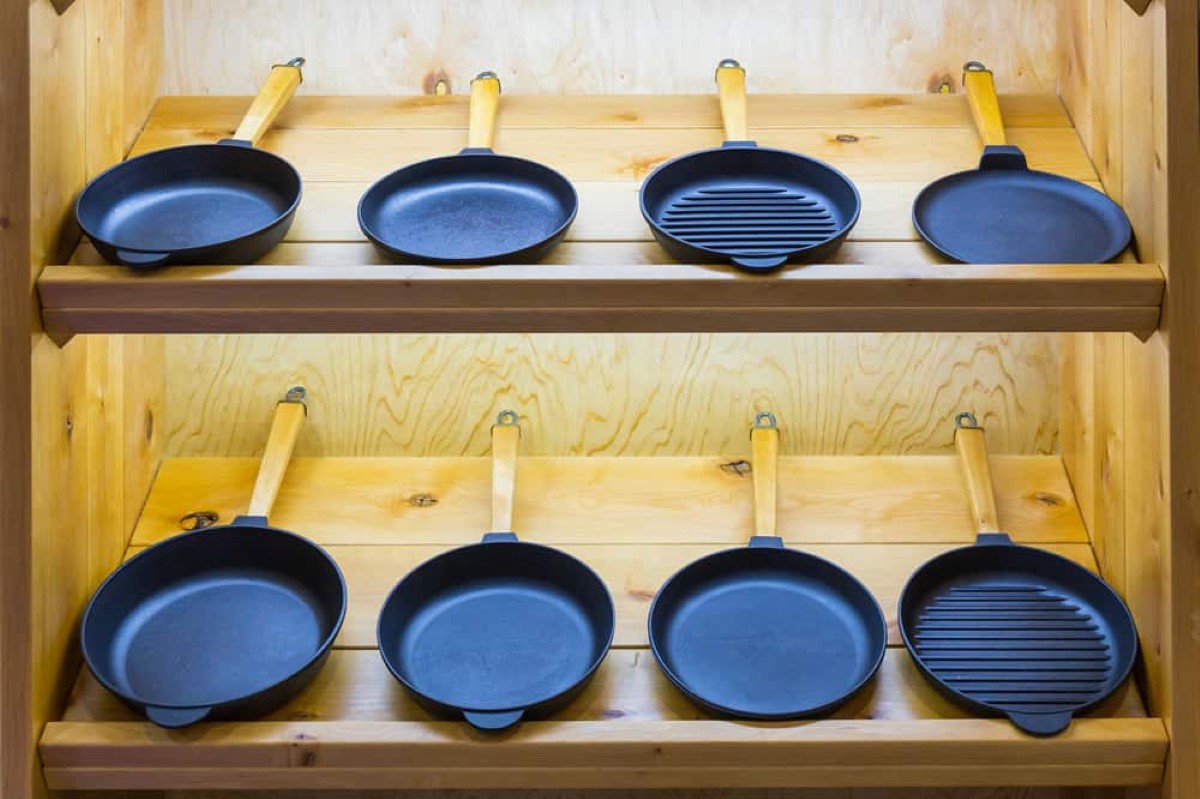
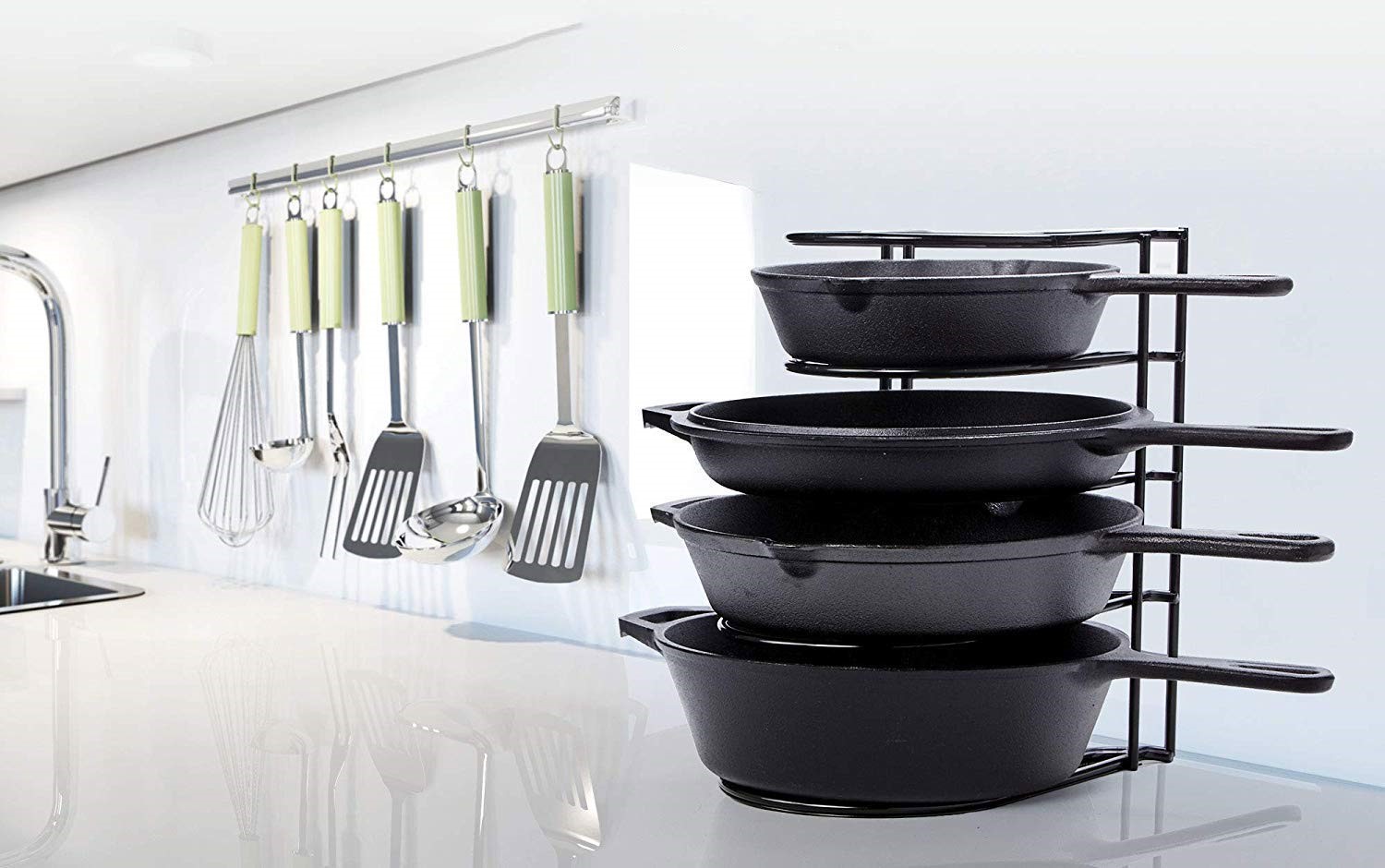
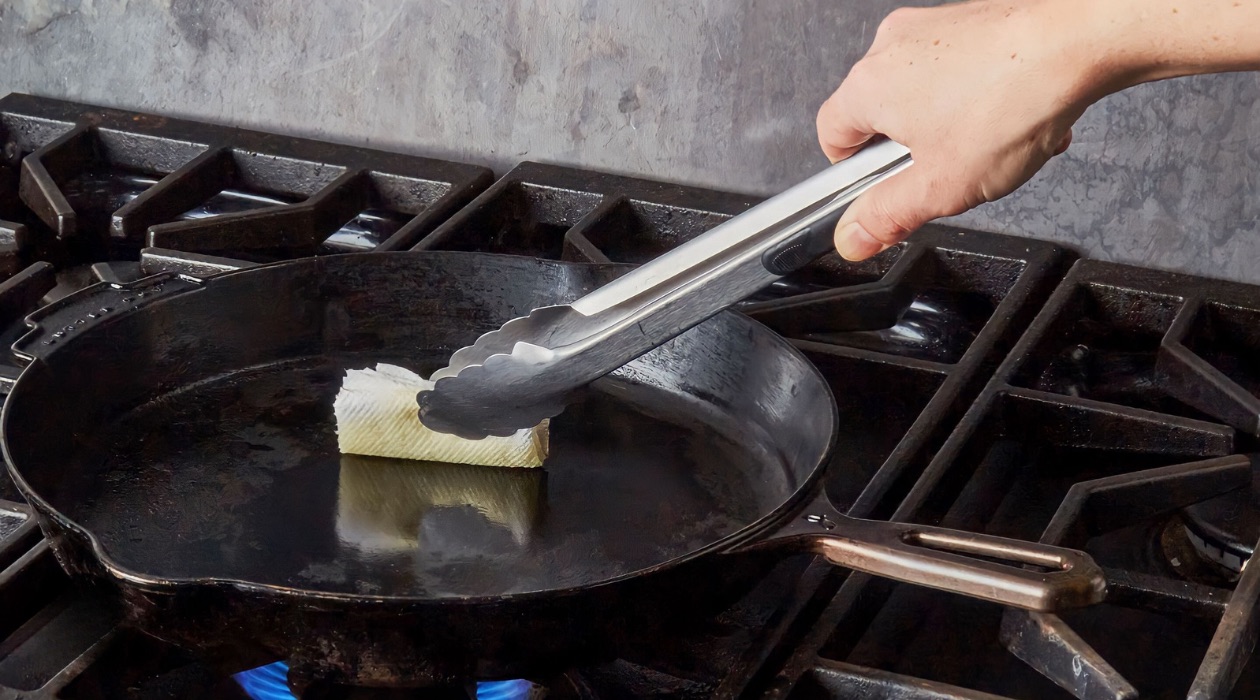
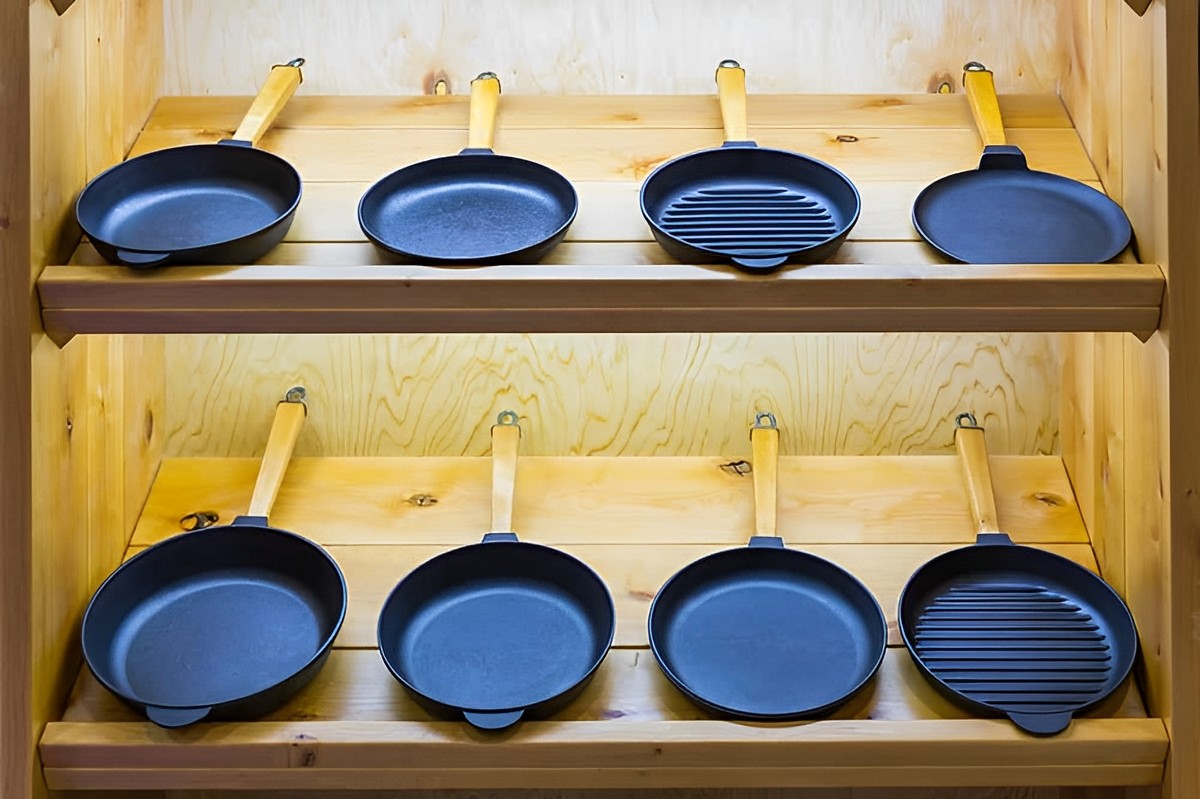
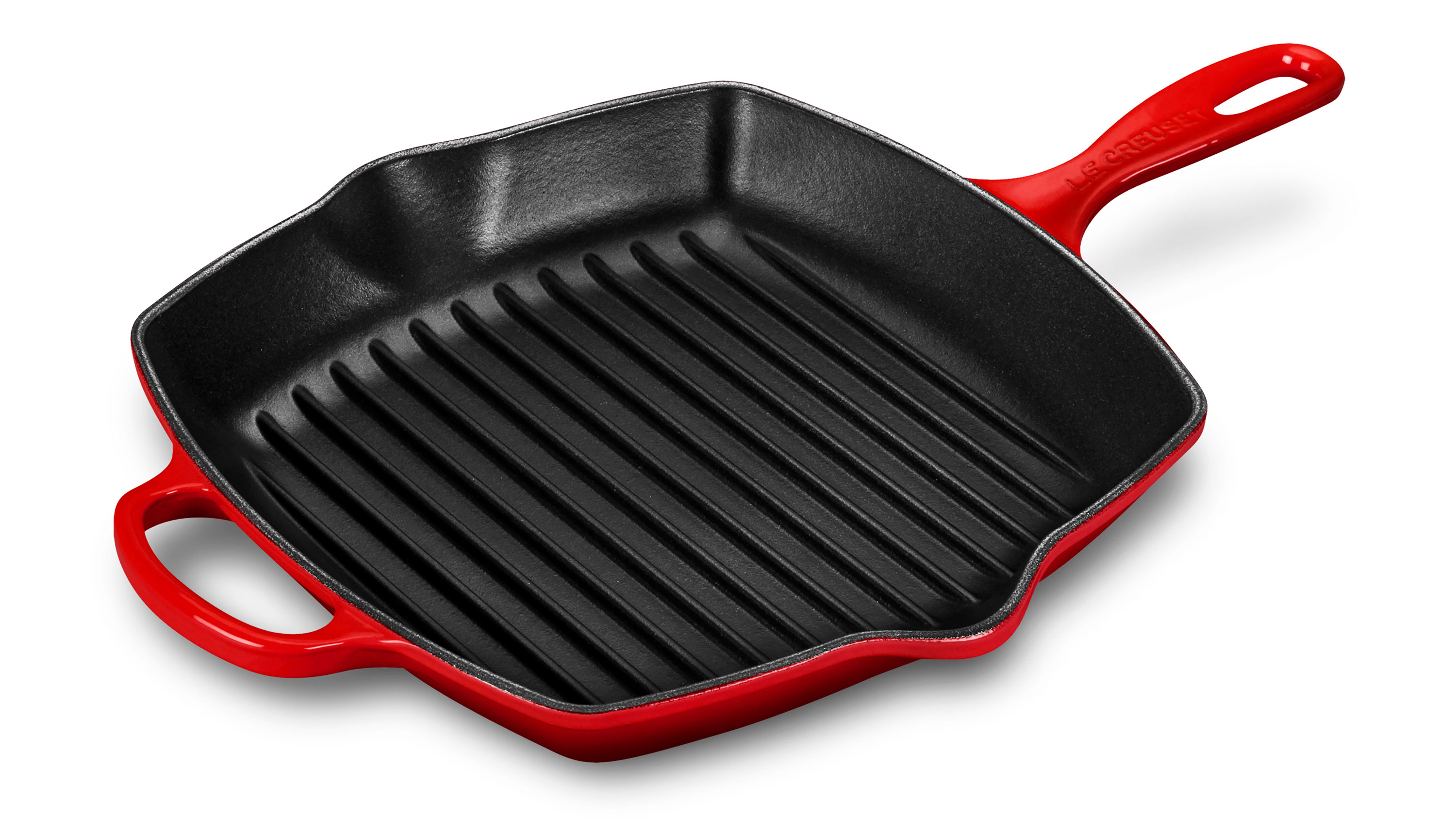
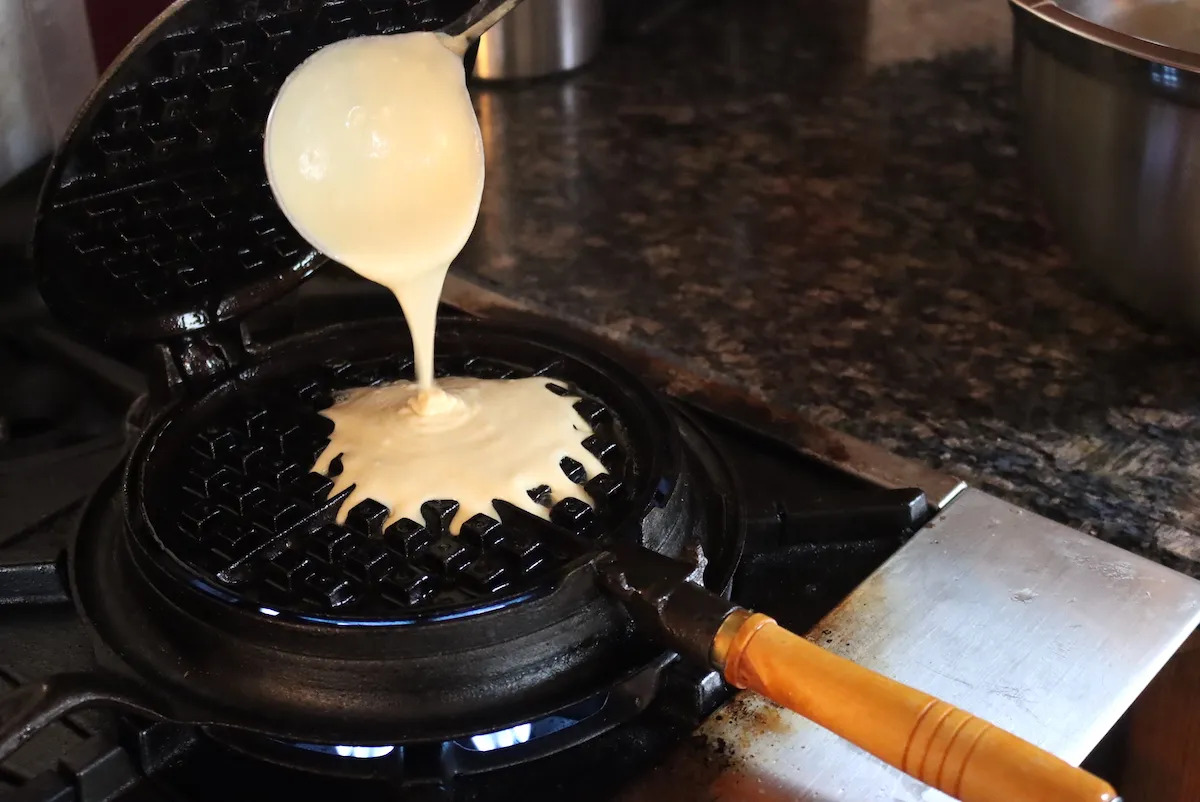
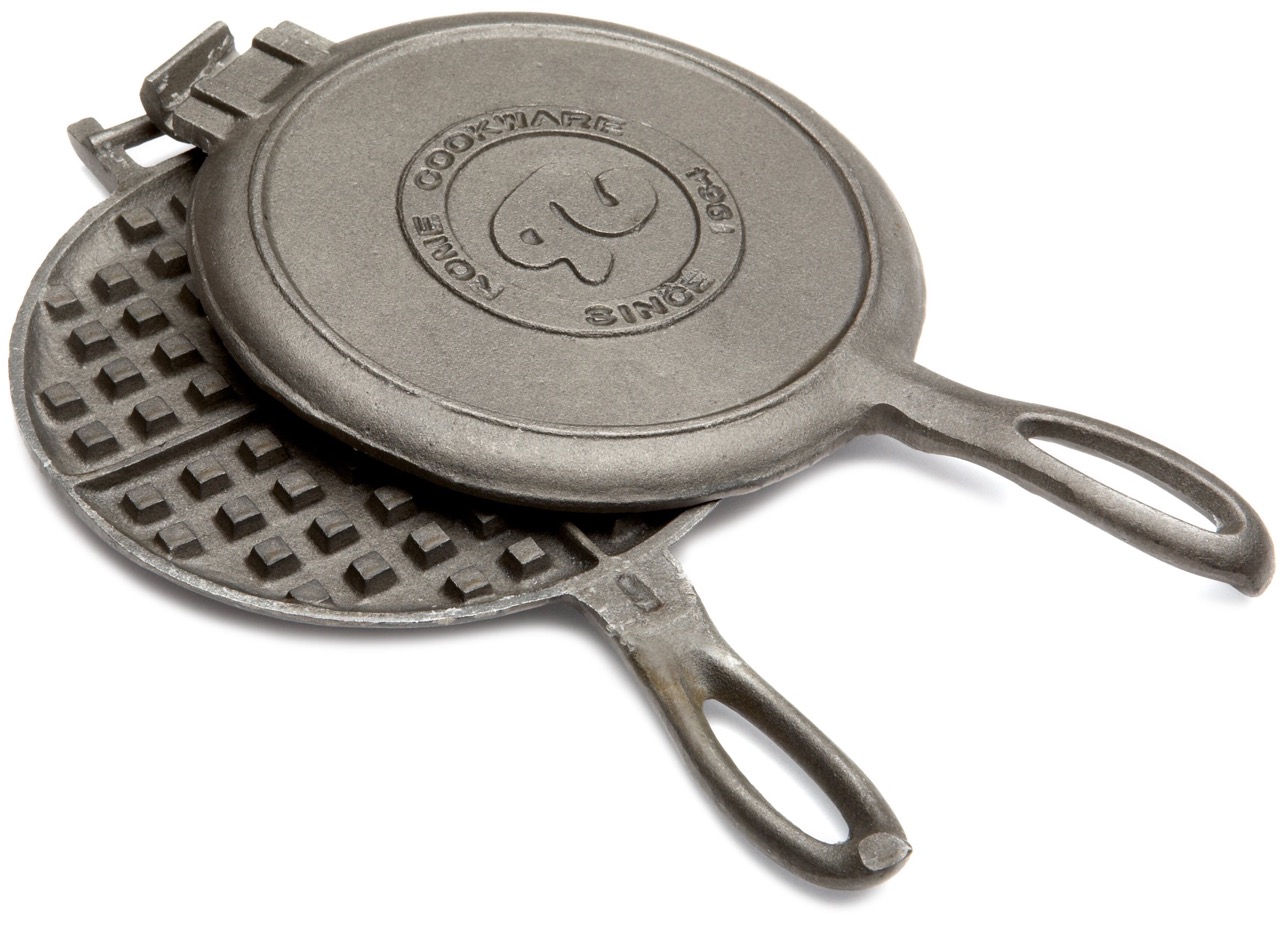
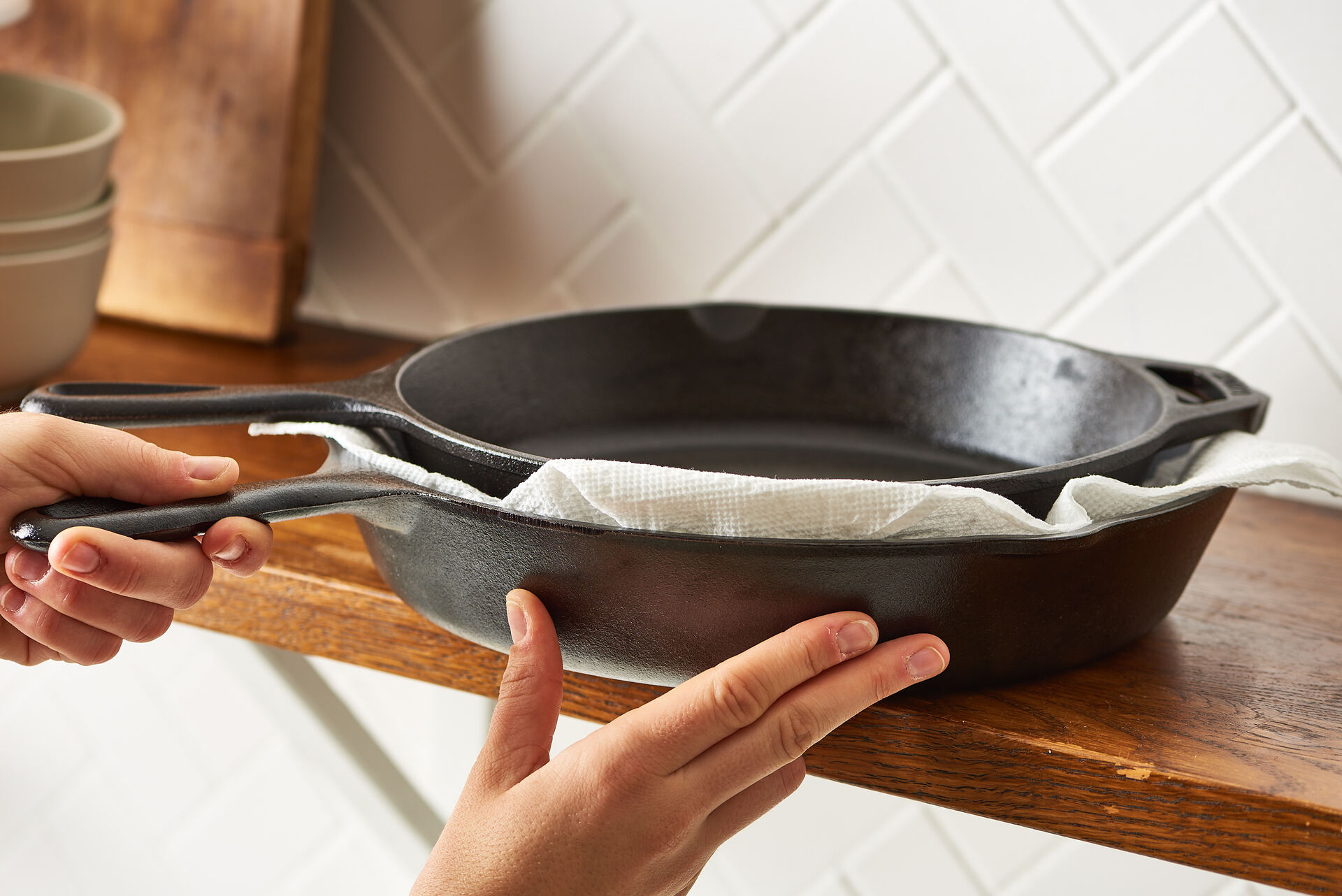
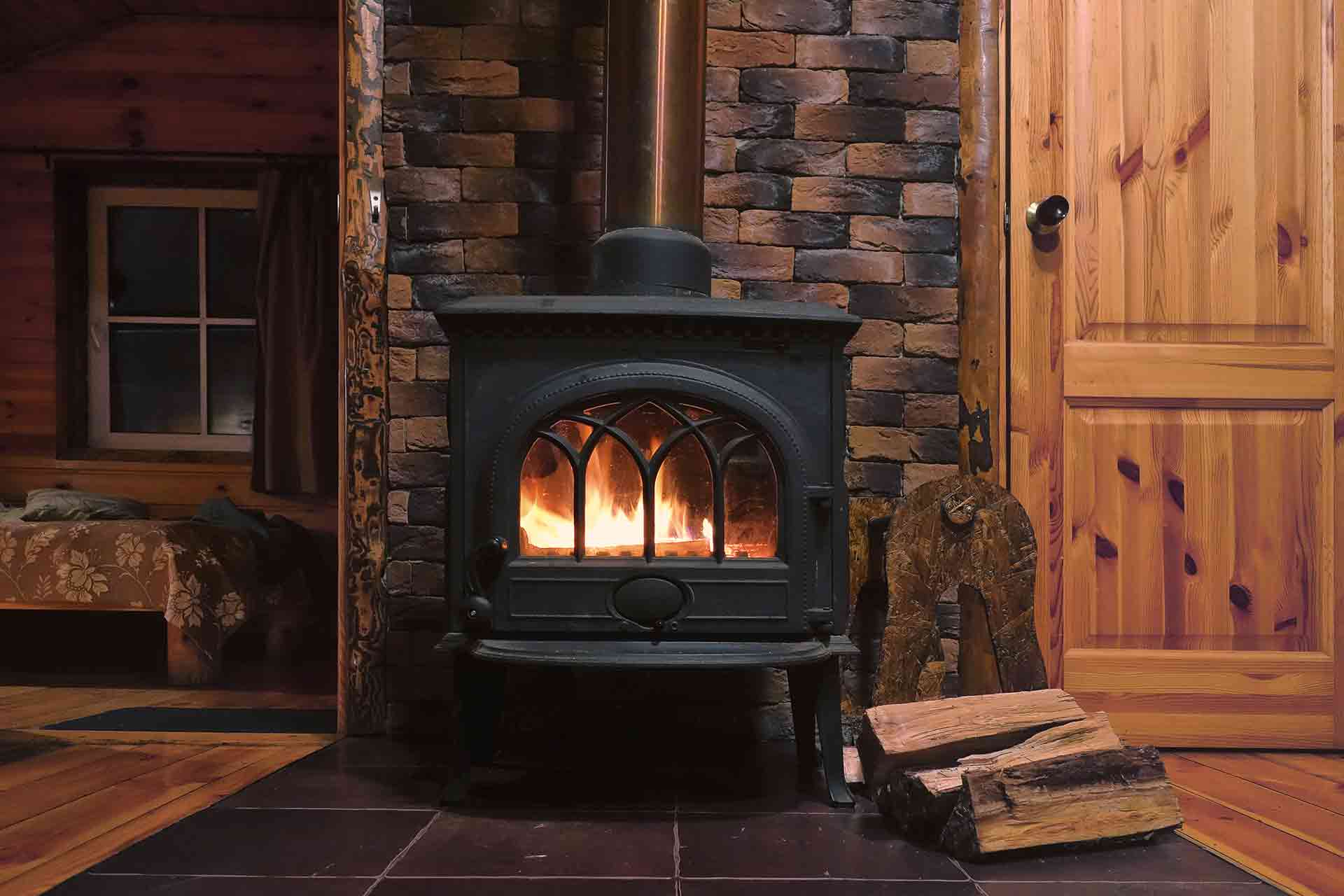

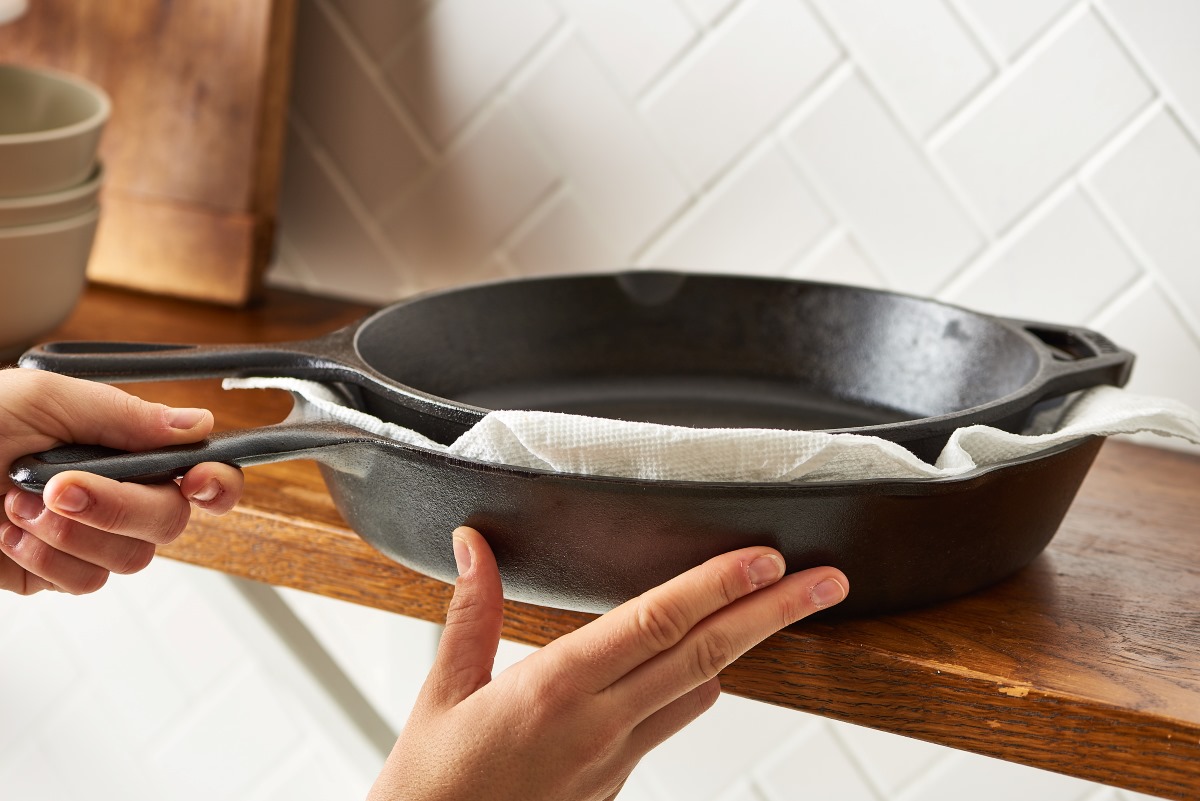
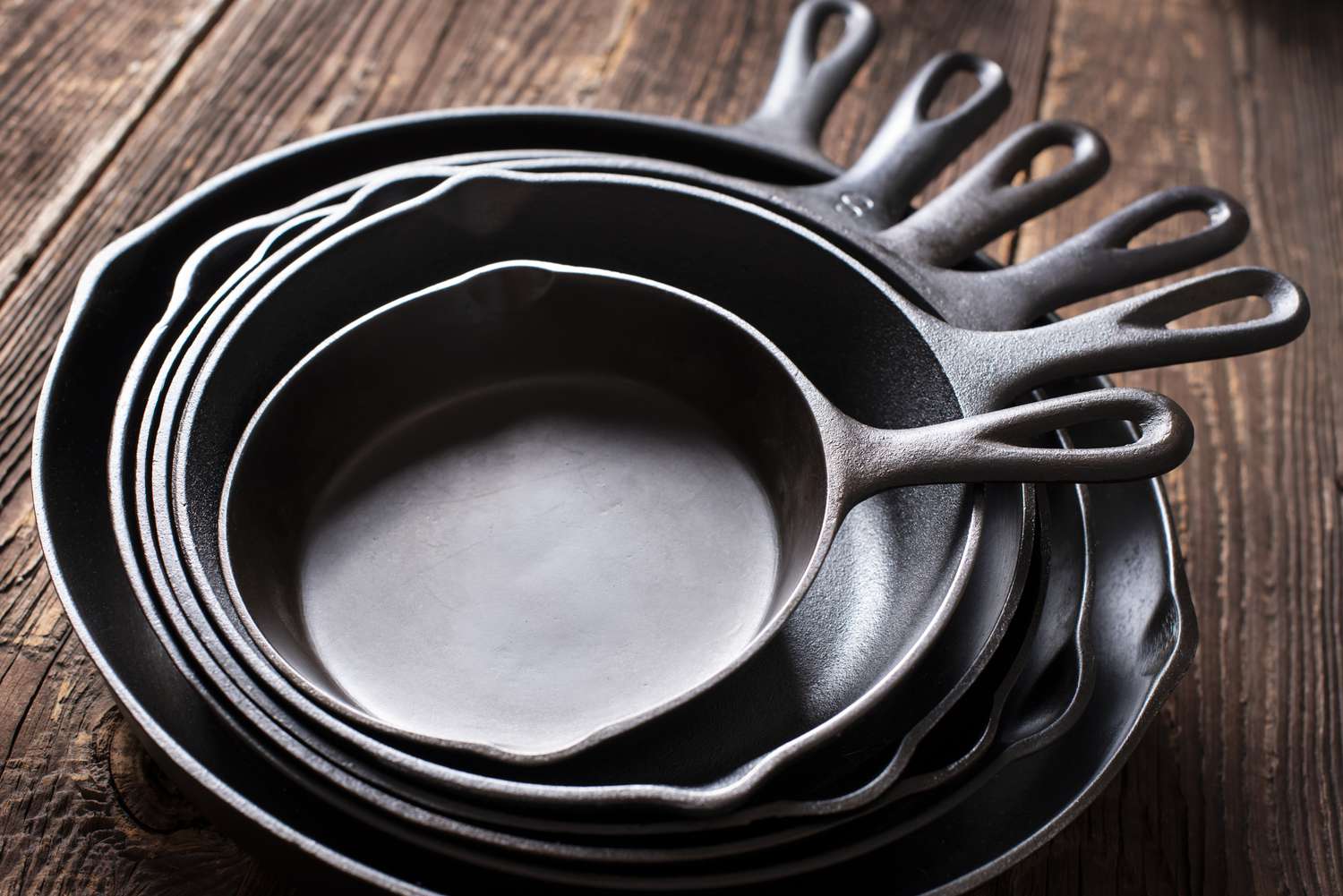

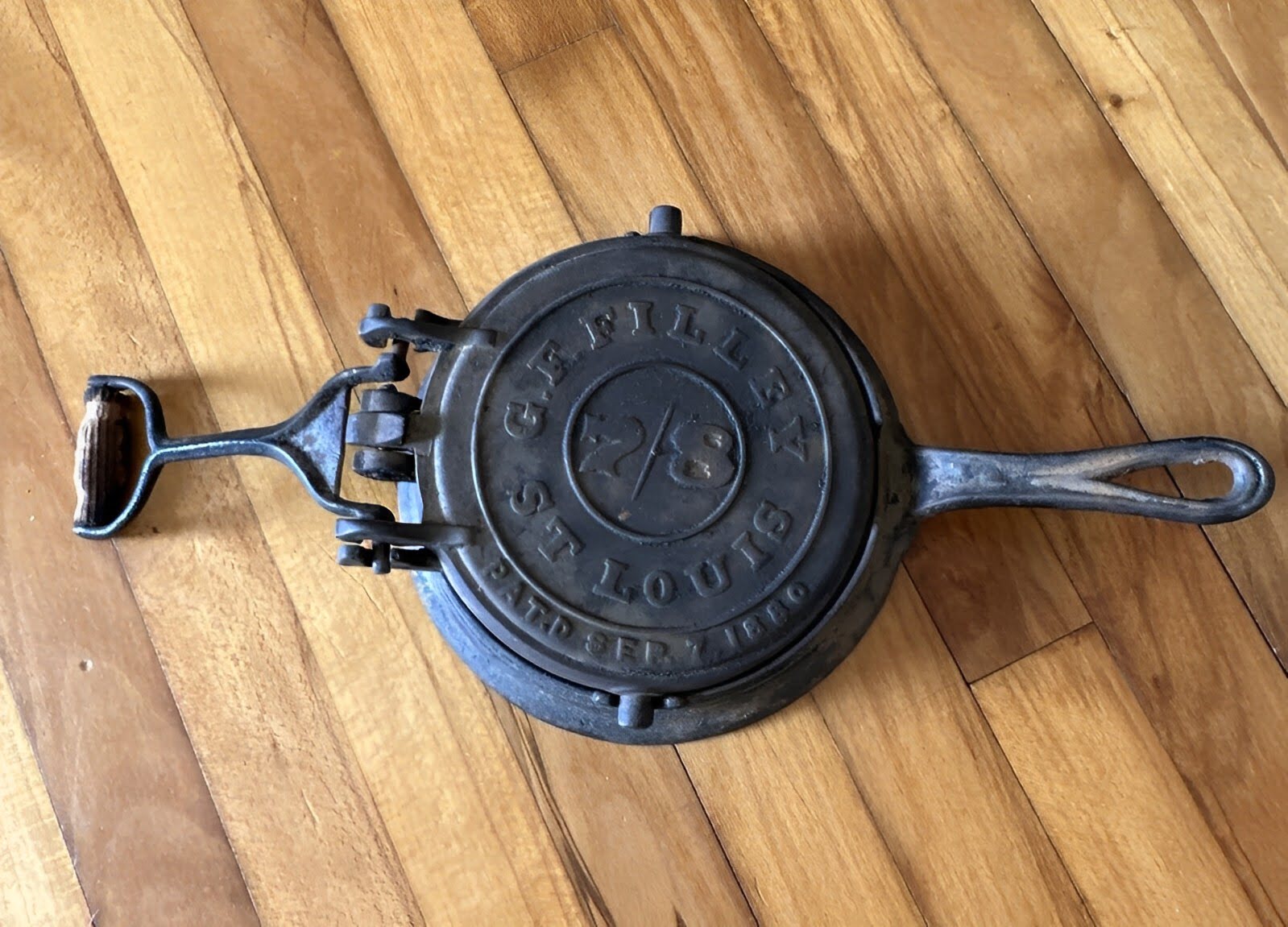

0 thoughts on “How To Season A Cast Iron Pan: Experts Advise”